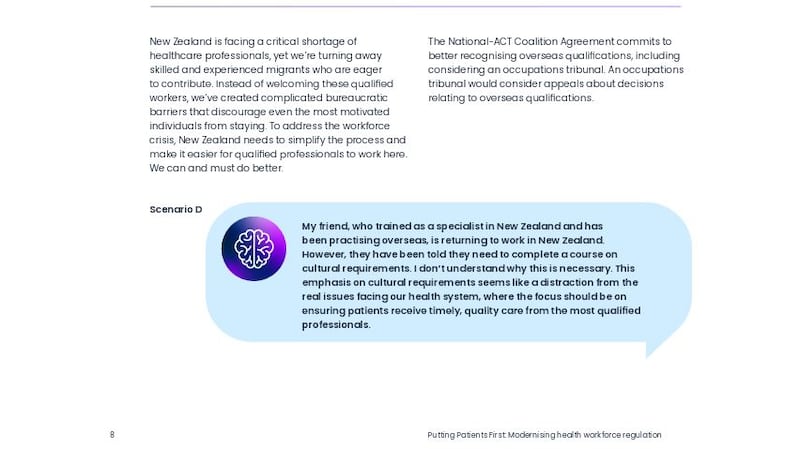NEW YORK – The coalition government has come under scrutiny at the United Nations Permanent Forum on Indigenous Issues in New York for decisions affecting Māori health.
National Iwi Chairs Forum Pou Tikanga and former Chief Operating Officer of Hāpai te Hauora, Janell Dymus-Kurei — who was part of a delegation representing Māori at the forum — raised concerns about the government’s review of health workforce legislation.
The proposed changes, outlined in the document Putting Patients First: Modernising Health Workforce Regulation, suggest a shift away from current expectations that health practitioners consider practices “beyond clinical safety.”
The document gives a scenario of a health specialist returning to New Zealand following a stint overseas. In the scenario, it says completing a course on cultural requirements ‘seems like a distraction.’
“They have been told they need to complete a course on cultural requirements. I don’t understand why this is necessary. This emphasis on cultural requirements seems like a distraction from the real issues facing our health system, where the focus should be on ensuring patients receive timely, quality care from the most qualified professionals.”

Dymus-Kurei says the notion that cultural safety and tikanga Māori get in the way of clinical safety is a ‘fallacious propaganda’ and goes against empirical evidence.
“This raises huge concerns that kaimahi will continue to be culturally unsafe and perpetuate not only racial discrimination but a failure to treat the humanity of the person,” she said.
Ko te ahurea, ko te hauora, e kore e pāhorehore, e kore e heuea
Kei te whakaū a Dymus-Kurei i te nui o ngā mahi i oti i te Māori i roto i ngā rāngai maha, ā-Kāwanatanga, ā-ture, i te ao mātauranga anō hoki. Ka mutu, ko te hauora o te tangata te mea e hono ai ngā rāngai katoa, nō reira, me pakari te hauora Māori.
“Ki a au nei, ko te hauora Māori, te whakatipu o te tamaiti Māori ki tōna ao Māori, ki tōna ahurea Māori, ki tōna kai Māori, ko tōna wai Māori. Ko wērā āhuatanga katoa, te hauora Māori,” hei tā Janell Dymus-Kurei.
Whakatupuranga mai, whakatupuranga atu, ko te Māori tērā e whakawaha nei te whakatōkia o te mātauranga Māori ki te hāngai hauora, e pai ai ngā tatauranga a te Māori.
Hei tāna, ko koe ki tēna, ko au ki tēnei kīwai o te kete.
“Engari kia mōhio mai, tē taea te tutuki i te hauora me tō kotahi. Ko te hauora ā-Māori nei, tētahi mea ka tutuki i a koe, ā-whānau nei, ā-hapū nei, ā-iwi nei.“

